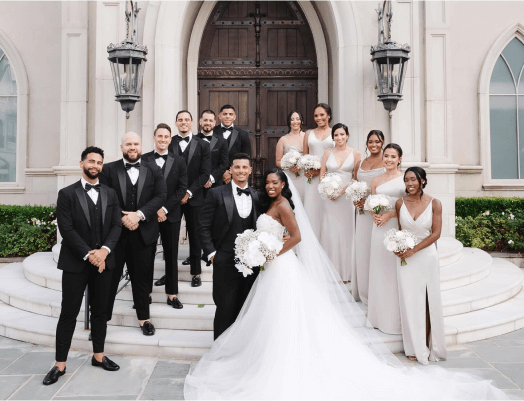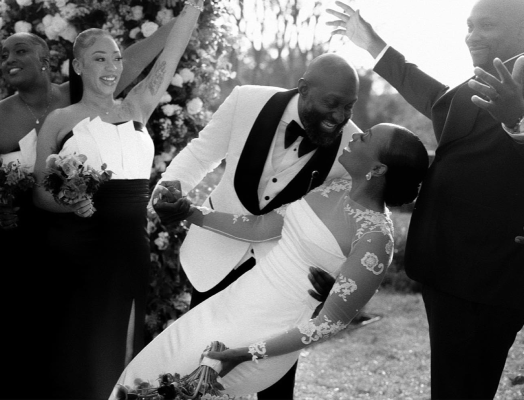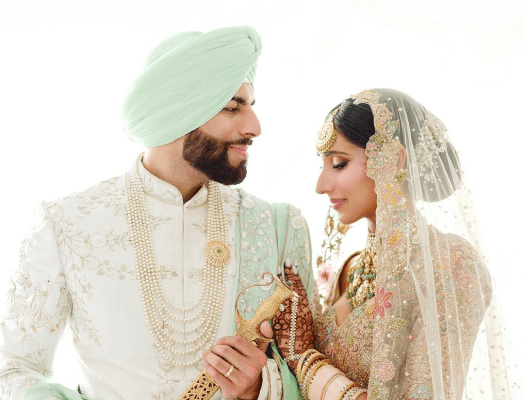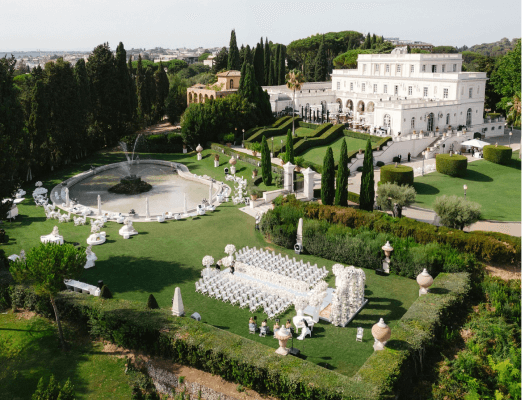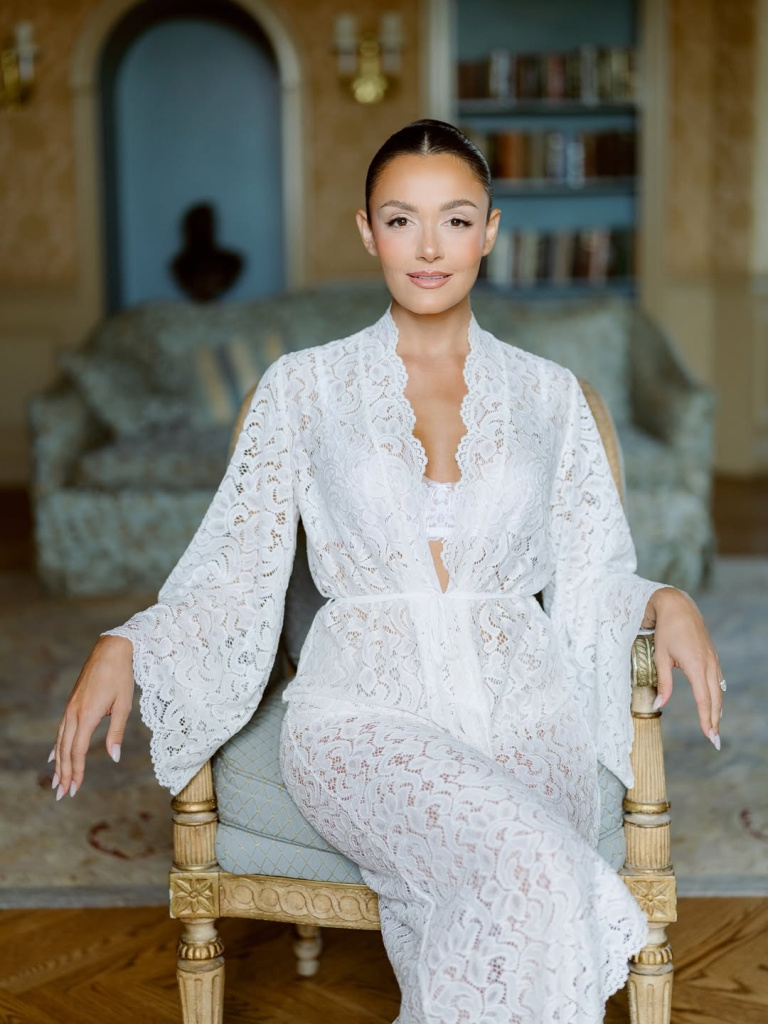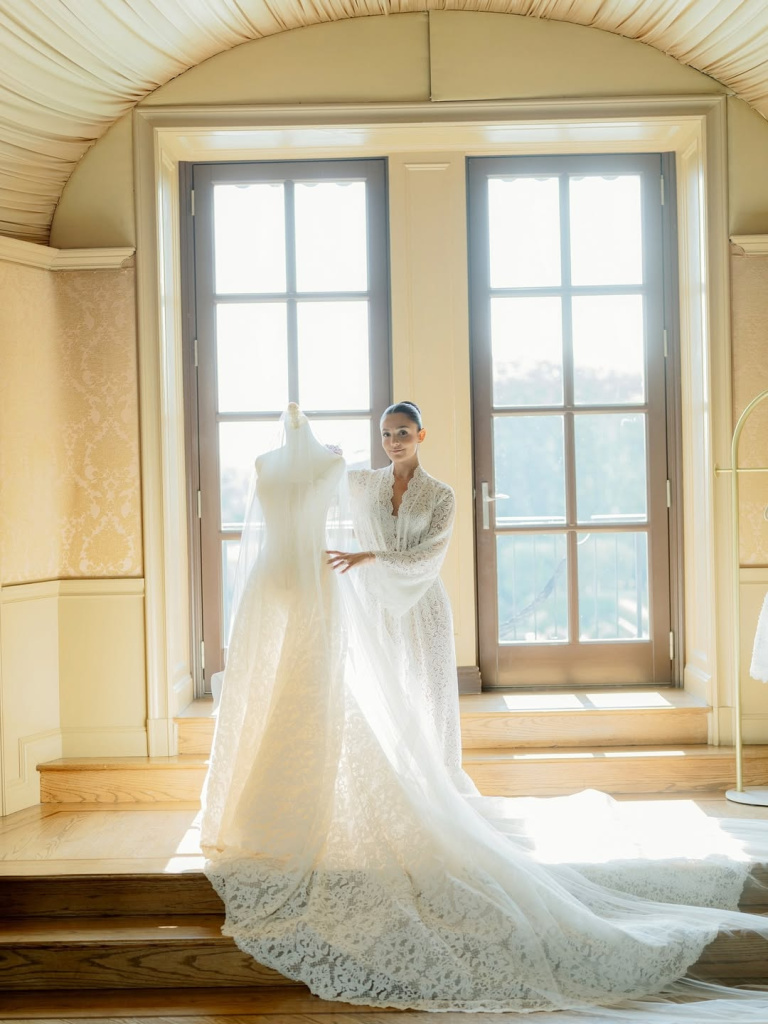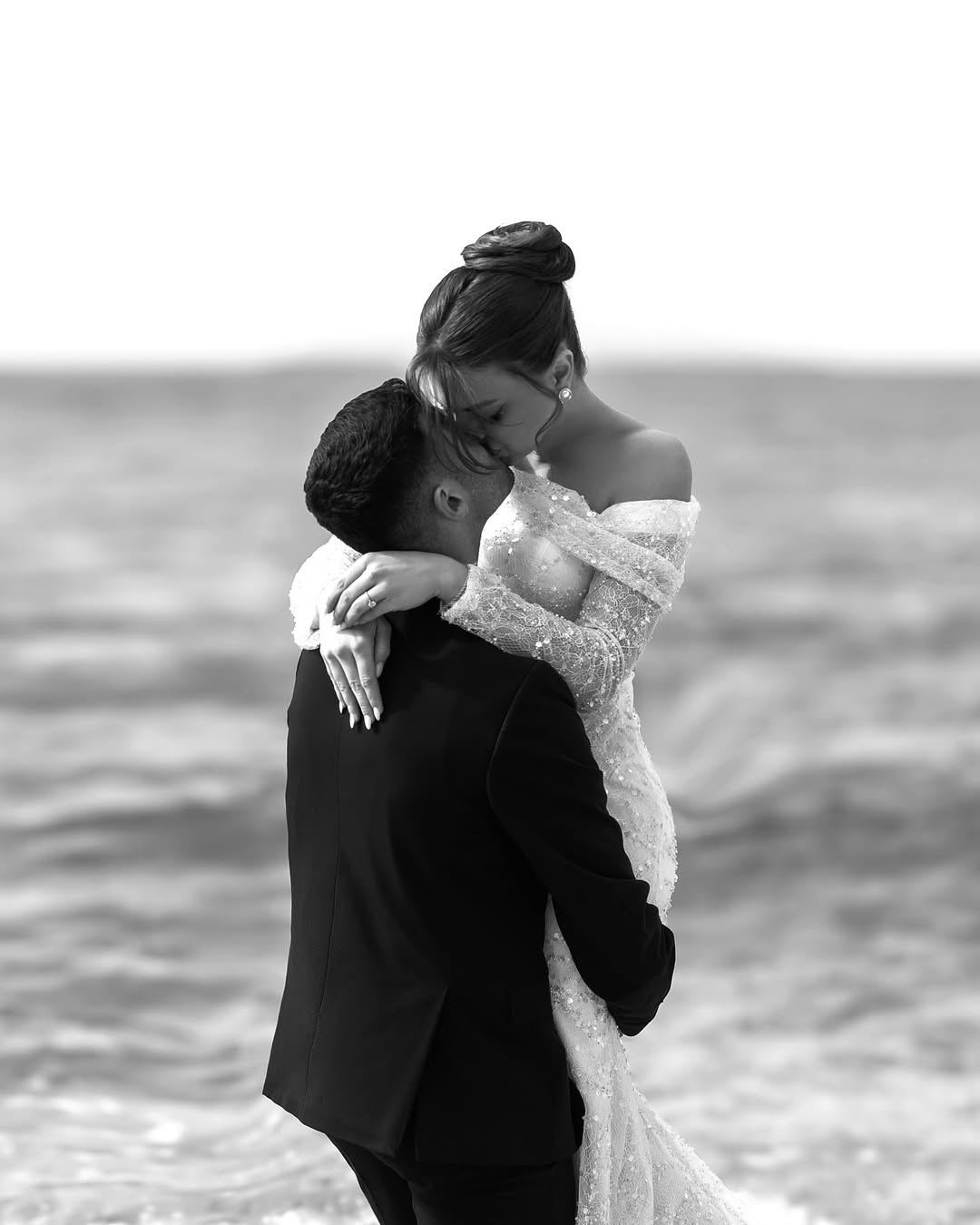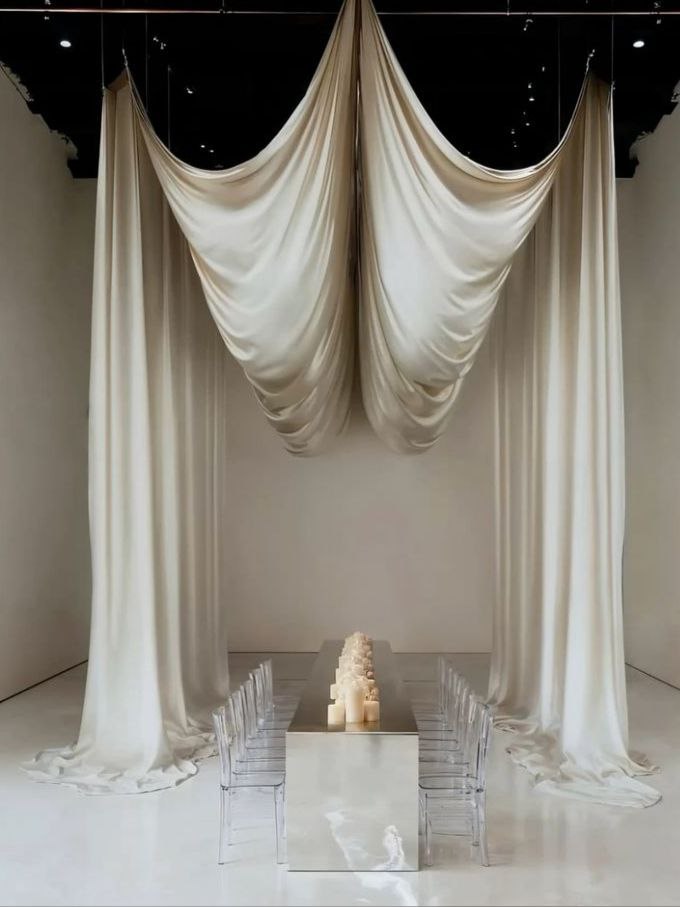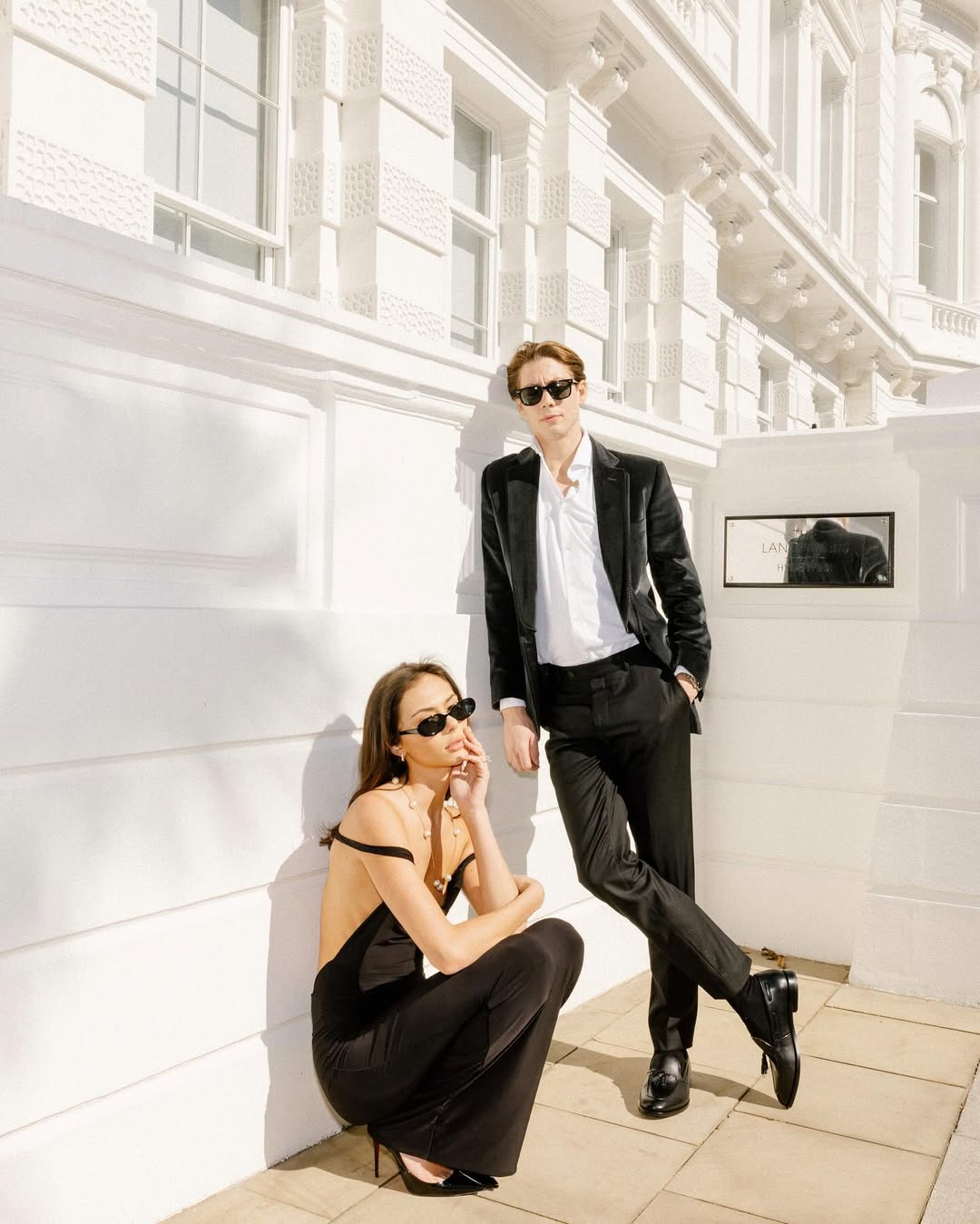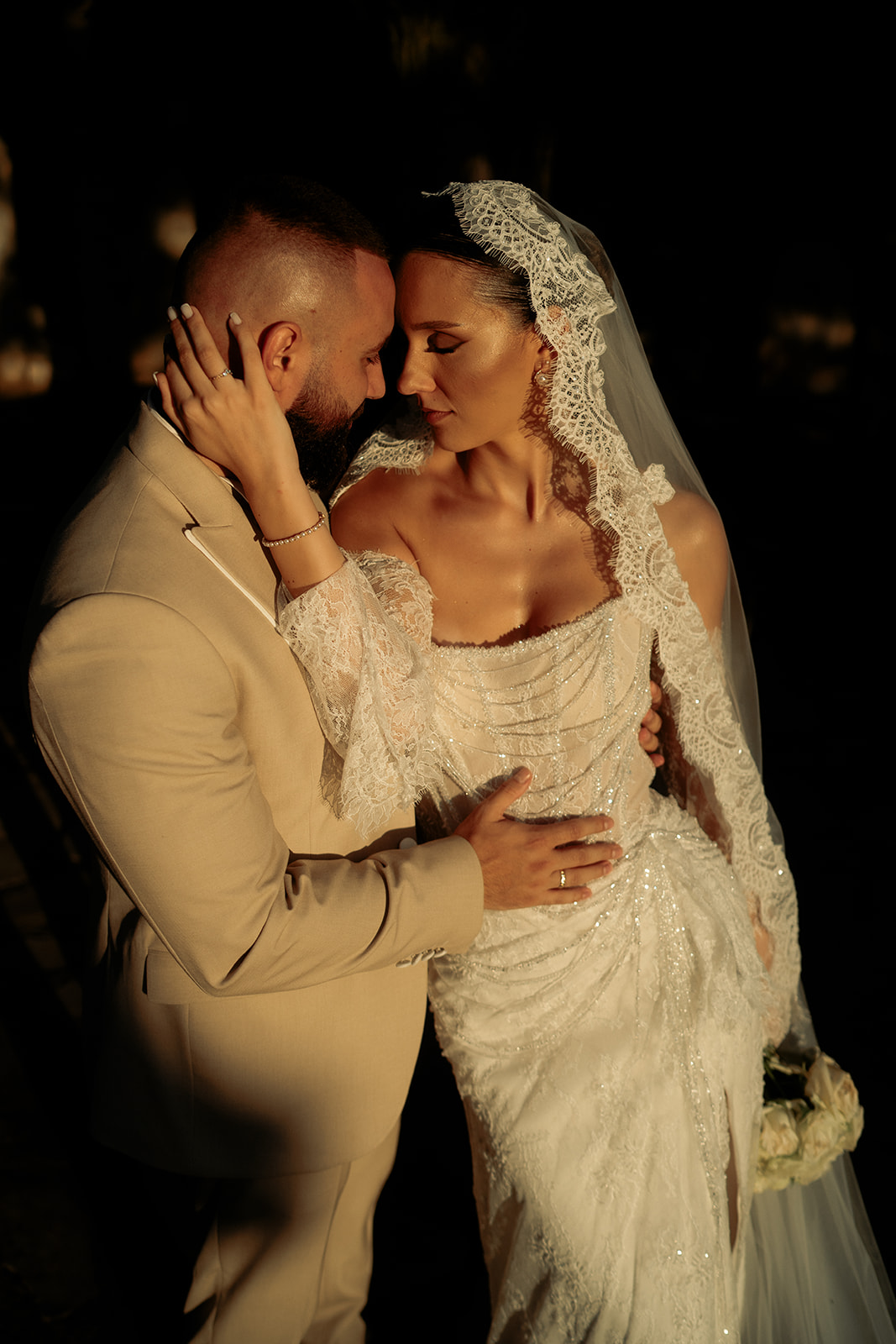15 Wedding Videography Tips for Brides
- Author: Natali Grace Levine
- Reading time: 9 min 39 sec
- Publication date: 09/20/2025
- Think About Audio Quality
- Create a Shot List for Special Moments
- Consider Lighting, Not Just Angles
- Embrace Slow Motion Magic
- Consider Minimalist Editing
- Perfect Your First Look Camera Positioning
- Ask About Drone Shots
- Request Silent Vow Footage
- Don't Skip Reception Video Coverage
- Keep Your Timeline Unrushed
- Record Personal Messages
- Maximize Pre-Wedding Footage
- Capture Guest Reactions
- Showcase Your Venue's Personality
- Film the Meaningful Details
Your wedding video is going to be something you treasure forever. While photos capture beautiful moments, video brings your day to life in a completely different way – you'll hear your partner's voice as they say their vows, see your dad's proud smile during his speech, and relive all those spontaneous moments that made your celebration uniquely yours.
We've put together this essential wedding videography guide for brides based on what actually works in real life. These aren't theoretical suggestions – they're practical strategies that will help you work with your videographer to create something absolutely beautiful. Whether you're just starting to plan or your wedding is next month, these insights will help you get the most out of your videography investment.
Find Your Perfect Wedding Vendors
Think About Audio Quality


Clear audio can make or break your wedding video. Ask your videographer to use lapel mics during your vows, speeches, and toasts. There's nothing quite like hearing your partner's voice crack with emotion as they promise to love you forever – that personal touch simply can't be captured in photos alone.
The difference between professional wedding videos and amateur footage often comes down to audio quality. When you watch your wedding video five years from now, you want to hear every word of your vows clearly, not strain to make out muffled sounds over background noise. Professional lapel microphones are tiny, nearly invisible, and capture crystal-clear audio even in challenging environments.
Make sure your videographer has backup audio equipment too, because Murphy's Law loves weddings! Wind, rain, dead batteries, or technical glitches can happen, so redundancy is key.
Create a Shot List for Special Moments
Beyond the standard ceremony coverage, think about those unique moments that matter specifically to you. Your shot list should reflect your personality and relationships:
- That special dance with your grandfather who taught you to waltz
- A quiet moment when you're fixing each other's boutonniere or veil
- Your rescue dog walking down the aisle as your ring bearer
- The moment your partner sees the venue decorated for the first time
- Your grandmother's reaction during the father-daughter dance
- The surprise flash mob your friends planned for the reception
These personal touches make your video uniquely yours and ensure your videographer doesn't miss the moments that will mean the most to you years from now. Wedding videography tips like these ensure that your video captures the essence of your big day beyond just the expected moments.
Consider Lighting, Not Just Angles


Good lighting transforms ordinary moments into cinematic gold, and understanding this can dramatically improve your final video. Natural light is almost always more flattering than artificial lighting, so timing becomes crucial for your most important moments.
If you're planning a first look, schedule it during golden hour – that magical time about an hour before sunset when the light is soft and warm. For indoor ceremonies, ask your videographer to scout the venue beforehand to understand how light moves through the space throughout the day. Those gorgeous rays streaming through stained glass windows might only happen at specific times.
Church ceremonies present unique lighting challenges. Many historic churches have beautiful architecture but challenging lighting conditions. Discuss with your videographer whether additional lighting equipment might be necessary, and whether it's permitted by your venue. Some churches have strict rules about video lighting during religious ceremonies.
Reception venues offer more flexibility with lighting, but the transition from daylight to evening can be tricky. If you're having an outdoor reception that continues into the evening, make sure your videographer is prepared for the lighting changes and has the equipment to handle low-light situations beautifully.
Embrace Slow Motion Magic
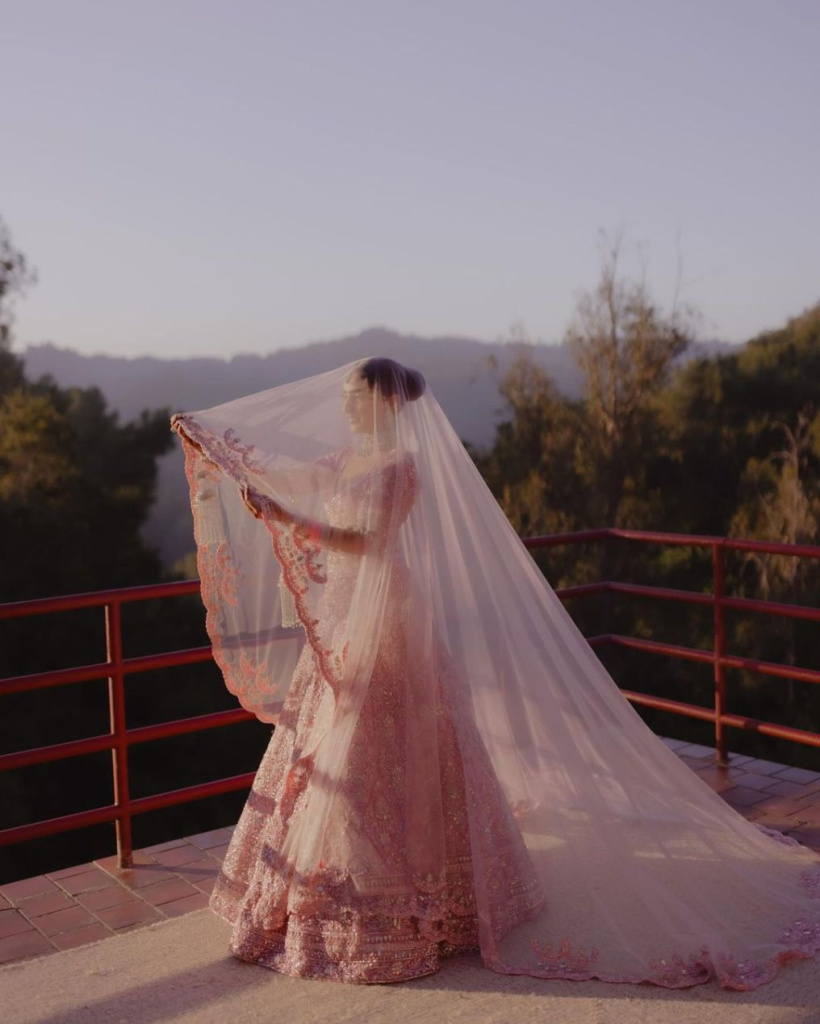
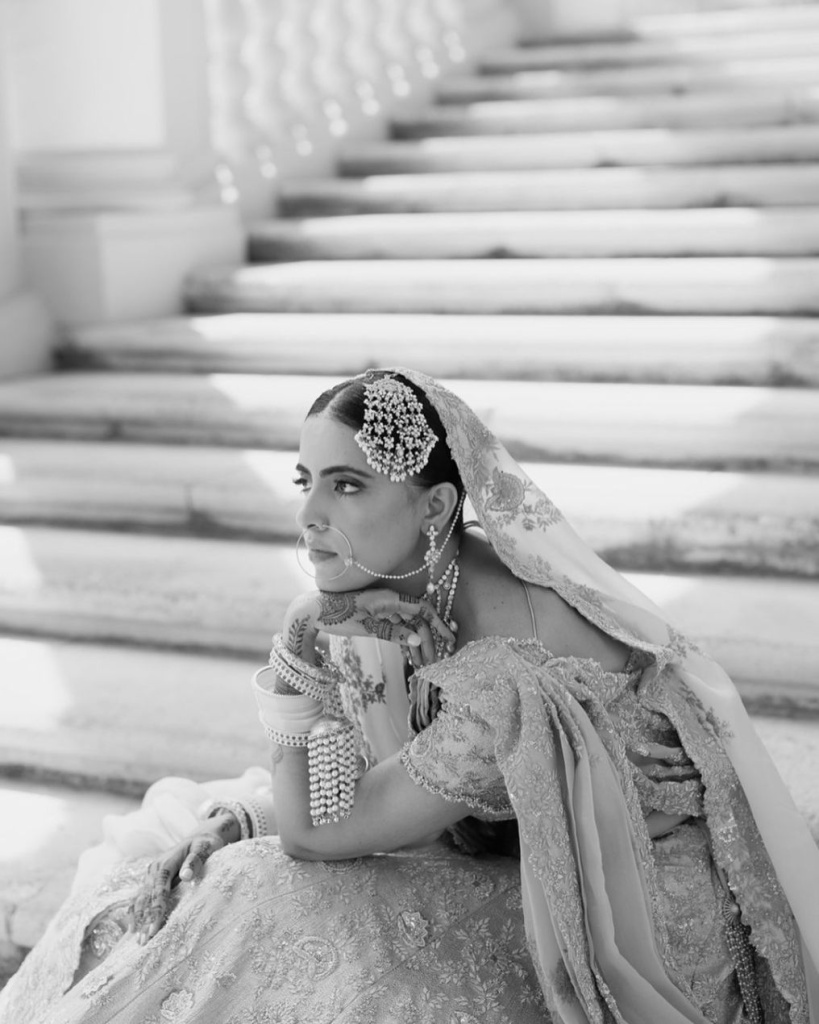
Slow-motion footage adds incredible drama and romance to your wedding video, but it works best when used strategically rather than throughout the entire film. The key is choosing the right moments for maximum emotional impact.
Your first kiss as newlyweds is an obvious choice – that moment deserves to be savored and stretched out beautifully. But consider other moments too: the way your dress flows as you walk down the aisle, champagne bubbles floating through the air during toasts, or your grand entrance at the reception when you're both glowing with happiness.
Slow motion also shines in capturing intimate details—like the exchange of rings, petals gently falling to the ground, or the tender moment when your partner lifts your veil. These delicate shots become even more poignant when slowed down. But be mindful: wedding videography tips and tricks like this work best in moderation. Overusing slow motion can make your video feel overly stylized and take away from its authenticity.

Consider Minimalist Editing
While heavily stylized cinematic videos are undeniably beautiful, there's something to be said for a more documentary-style approach that prioritizes authentic emotion over flashy effects. This editing style focuses on real moments, natural reactions, and genuine emotions rather than heavy color grading, dramatic music, or lots of special effects.
Documentary-style wedding videos tend to age better over time. When you watch your wedding video in twenty years, you'll want to remember how things actually looked and felt, not just how they looked through an Instagram filter. Natural skin tones, real lighting, and authentic moments create videos that feel timeless rather than trendy.
Perfect Your First Look Camera Positioning

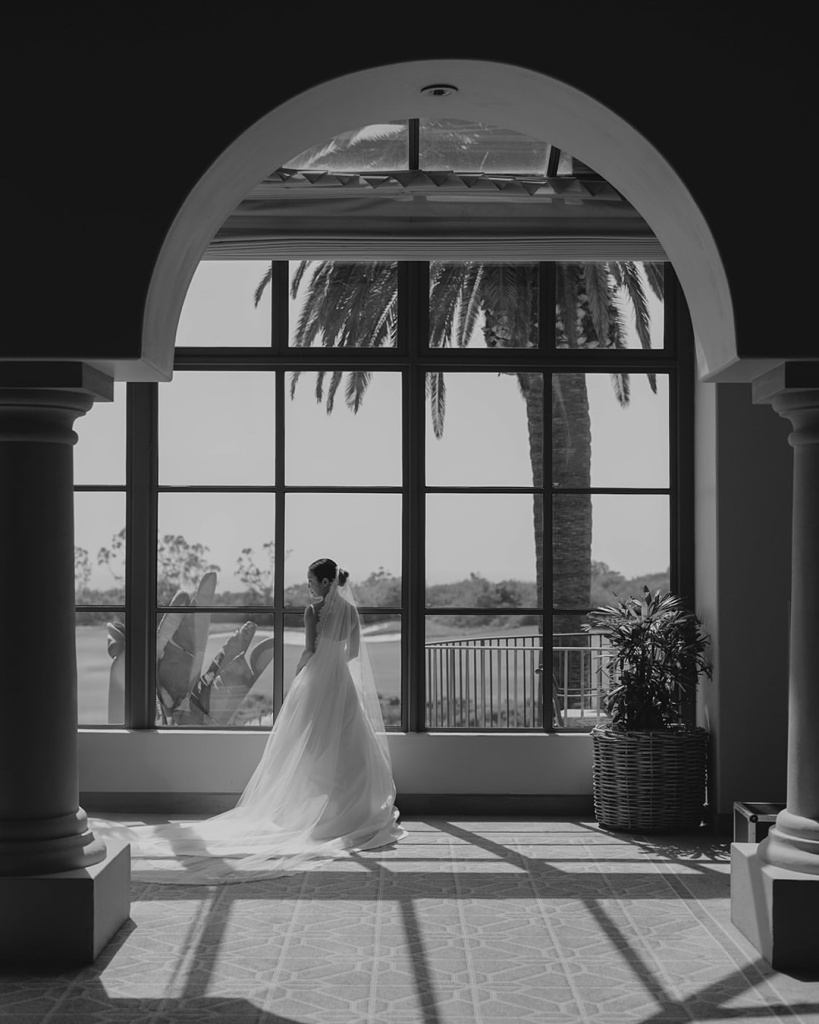
Your first look deserves special attention because it's one of the most intimate and emotional moments of your wedding day. The key to capturing it perfectly lies in camera positioning and having multiple angles covered simultaneously.
We recommend having at least two cameras for this moment – one focused on you as your partner approaches, and another positioned to capture their reaction when they turn around. A third camera at a distance can capture the overall scene and the beauty of your location. This ensures that no matter which reaction is more dramatic or emotional, it's captured beautifully.
Think about the location for your first look carefully. You want somewhere meaningful, beautiful, and private, but also somewhere that offers good lighting and multiple angle opportunities for your videographer. Avoid areas with distracting backgrounds or heavy foot traffic that might interrupt the moment. Consider the timing too. First looks work best when you're both relaxed and not feeling rushed. Build extra time into your schedule around this moment so neither of you feels pressured to hurry through such an important part of your day.
Ask About Drone Shots


Drone footage has revolutionized wedding videography, offering breathtaking perspectives that were once impossible to achieve. If your venue has stunning outdoor spaces, unique architecture, or beautiful surrounding landscapes, aerial footage can add a cinematic quality that makes your video feel truly epic.
However, drone usage comes with important considerations:
- Legal requirements: Make sure your videographer is FAA-certified to operate drones commercially
- Venue restrictions: Many venues, especially churches and historic sites, prohibit drone usage
- Weather dependency: Wind, rain, or extreme temperatures can ground drones
- Noise concerns: Drones can be noisy during quiet ceremony moments
- Battery limitations: Drone flight time is limited, so timing is crucial
When done properly, drone shots work beautifully for establishing shots of your venue, aerial views of your outdoor ceremony, sweeping shots of your cocktail hour, or dramatic footage of you both in your wedding attire against a stunning landscape backdrop.
Request Silent Vow Footage


This might seem counterintuitive, but having some silent footage of your vow exchange creates a powerful viewing experience when you watch your wedding video later. Many videographers automatically add music over vow exchanges, but this can sometimes overpower the intimacy of the moment.
Silent vow footage allows you to hear your actual voices, your partner's breathing, maybe even your heartbeat if the microphone picks it up. These authentic sounds create an incredibly intimate viewing experience that brings you right back to that moment. You'll hear your voice shake with emotion, your partner's laugh when they stumble over a word, or the way the wind rustled through the trees during your outdoor ceremony. These videography tips for weddings help capture the raw, unfiltered emotions that make the day uniquely yours.
Don't Skip Reception Video Coverage
Your reception is where personalities truly shine and where the most genuine joy happens throughout your wedding day. This is when your guests are relaxed, the formalities are behind you, and everyone is just celebrating your love story. Reception footage captures moments that photos simply cannot. The way your uncle's face lights up when his favorite song plays, your flower girl's adorable dance moves, or the moment when your elderly grandfather gets everyone on the dance floor – these moving moments show the true spirit of your celebration.
Make sure your videographer understands the flow of your reception and knows when key moments will happen. The cake cutting, first dance, parent dances, and bouquet toss are obvious must-haves, but don't forget about the spontaneous moments in between. Some of the most treasured reception footage happens during the quiet moments between big events.
Keep Your Timeline Unrushed
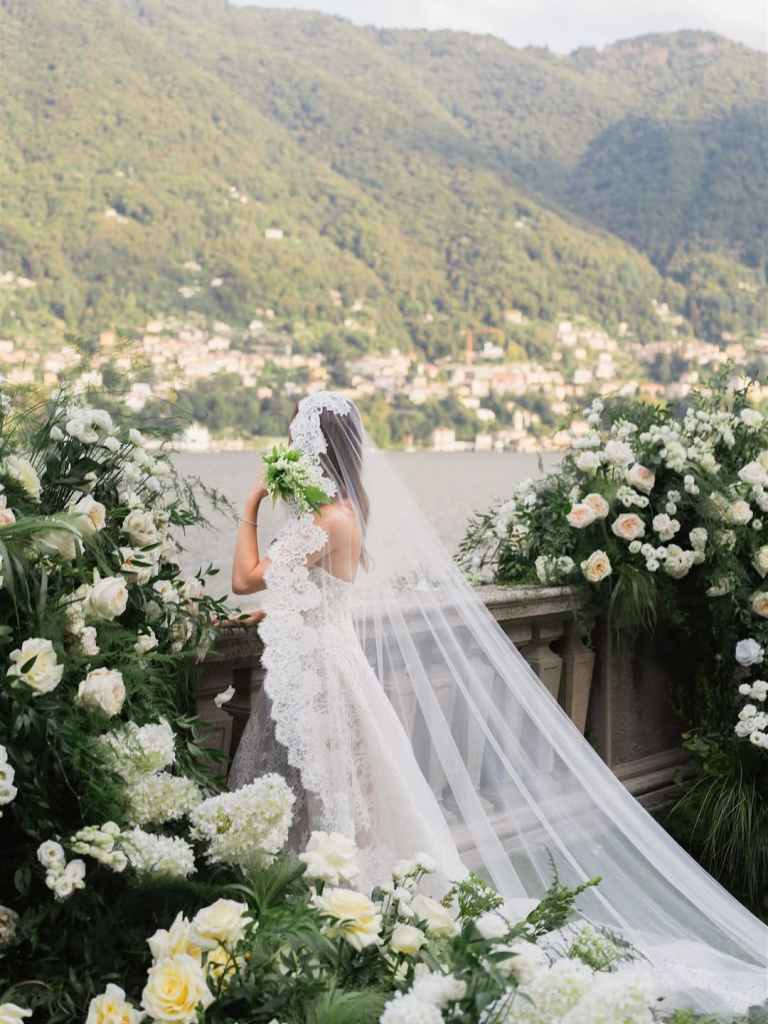
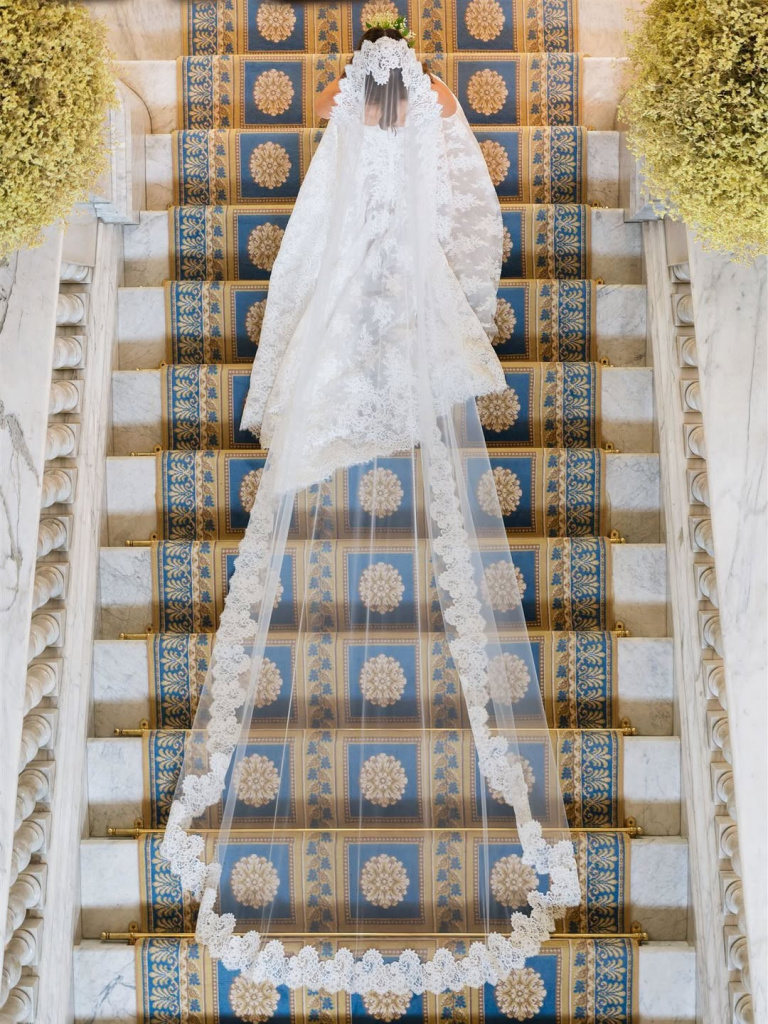
One of the biggest favors you can do for your wedding videographer (and yourselves) is to build a realistic timeline with buffer time between major events. When you're constantly rushing from one moment to the next, it shows in the final video – you'll look stressed, your vendors will look frazzled, and those beautiful, spontaneous moments won't have space to happen.
A relaxed timeline allows for:
- Natural transitions between events that feel organic rather than rushed
- Time for your videographer to move equipment and get into position for the next shot
- Spontaneous moments that often become the most treasured parts of your video
- Better lighting opportunities as your videographer can wait for the perfect moment
- Less stress for everyone involved, which translates to more genuine smiles and laughter
Consider adding 15-30 minutes of buffer time between major events. Yes, this might mean a longer photography timeline or a later reception start time, but the result will be a much more enjoyable day for everyone and a more beautiful final video.
Record Personal Messages
Personal messages between you and your partner create incredibly touching bookends for your wedding video. These can be recorded during your engagement session, the morning of your wedding, or even months before your big day.
These messages work best when they're genuine and from the heart rather than overly scripted. Talk about why you're excited to marry this person, what you're looking forward to in your marriage, or share a memory that perfectly captures your relationship. Some couples choose to write letters to each other and read them on camera, while others prefer to speak more spontaneously.
Maximize Pre-Wedding Footage
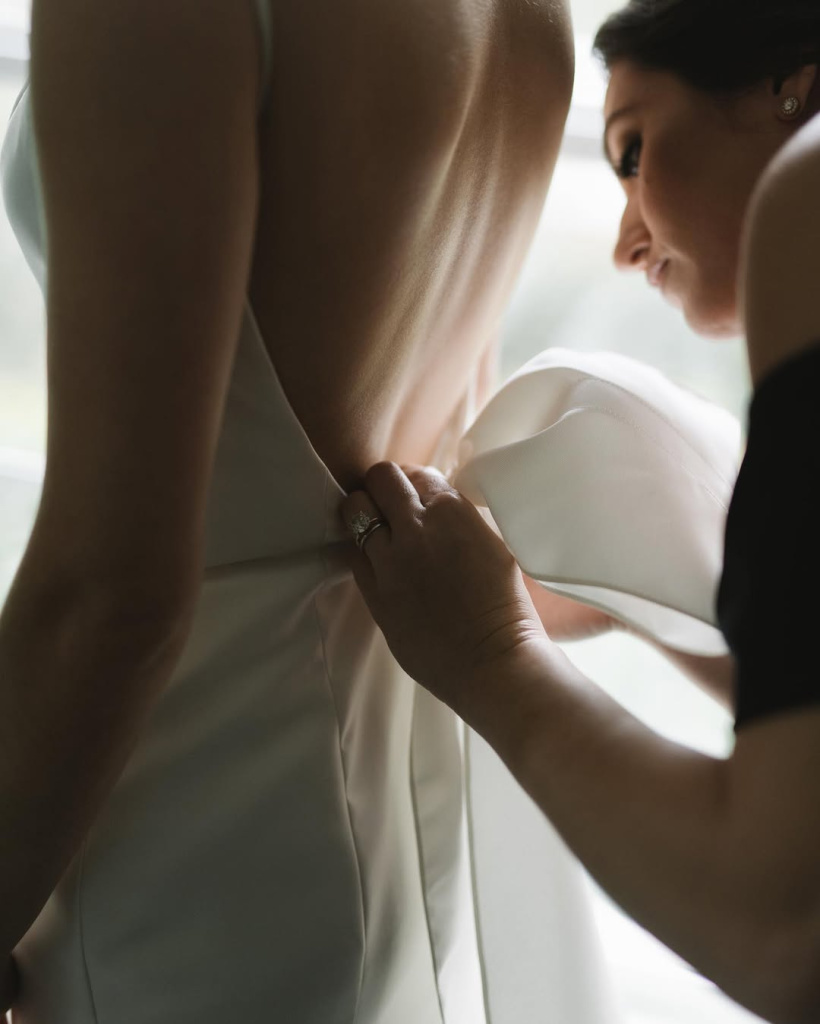
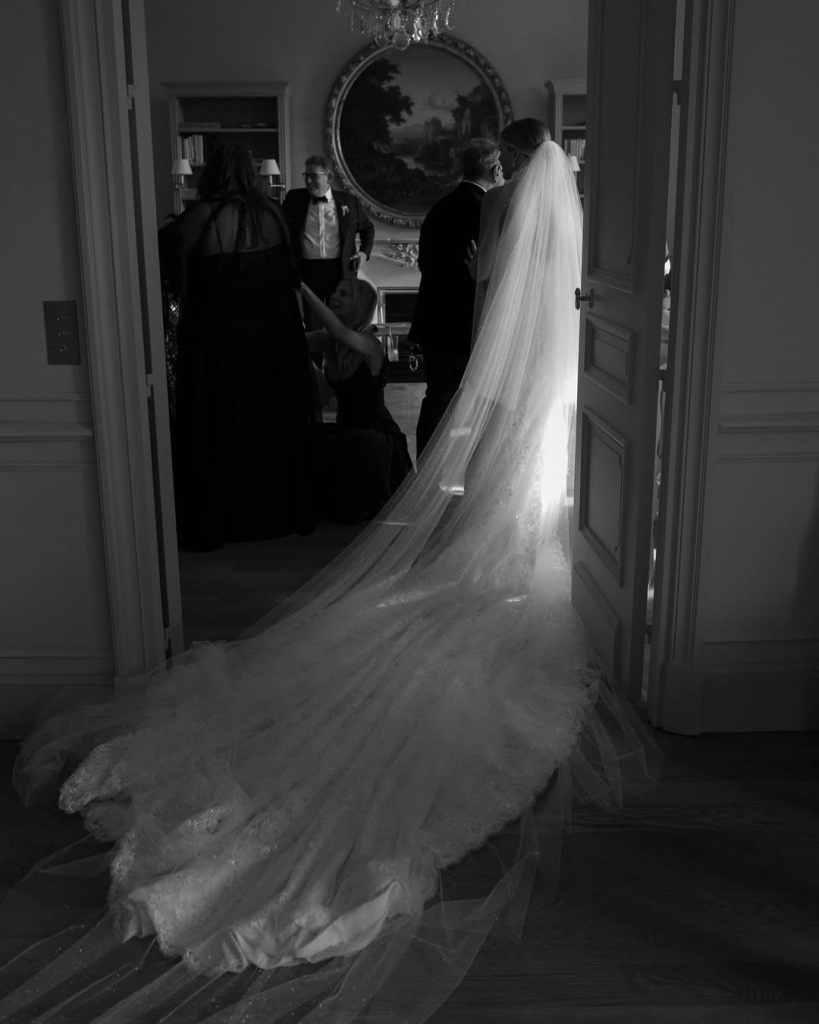
The getting-ready portion of your day offers some of the most emotional and intimate footage of your entire wedding video. These behind-the-scenes moments show the anticipation, excitement, and nervous energy that leads up to your ceremony.
Don't rush through getting ready just to have more time for photos. These quiet moments are often the most emotional parts of your wedding video. Your mom helping you into your dress, your partner's hands shaking as they tie their tie, the moment you see yourself fully ready for the first time – these authentic moments are pure gold for your videographer.
Consider the logistics of getting-ready coverage. If you're getting ready in separate locations, decide which location your videographer should prioritize, or whether you need a second videographer to cover both. Natural light in your getting-ready space makes a huge difference in the quality of this footage, so choose your preparation locations with this in mind.
Capture Guest Reactions
While you're obviously the stars of your wedding video, your loved ones' reactions during key moments add incredible heart and context to your film. Your videographer should be watching for and capturing these emotional responses throughout your day.
Key moments for reaction shots include:
- Your parents' faces when they see you in your wedding dress for the first time
- Your partner's friends during the ceremony when you're exchanging vows
- Your grandmother's smile during your first dance
- Children's reactions throughout the day (they're often the most genuine and entertaining)
- The wedding party during emotional speeches
These reaction shots serve an important purpose in your wedding video – they show the impact your love story has on the people who matter most to you. When you watch your video years from now, seeing your loved ones' joy and emotion will be almost as meaningful as seeing your own.
Showcase Your Venue's Personality
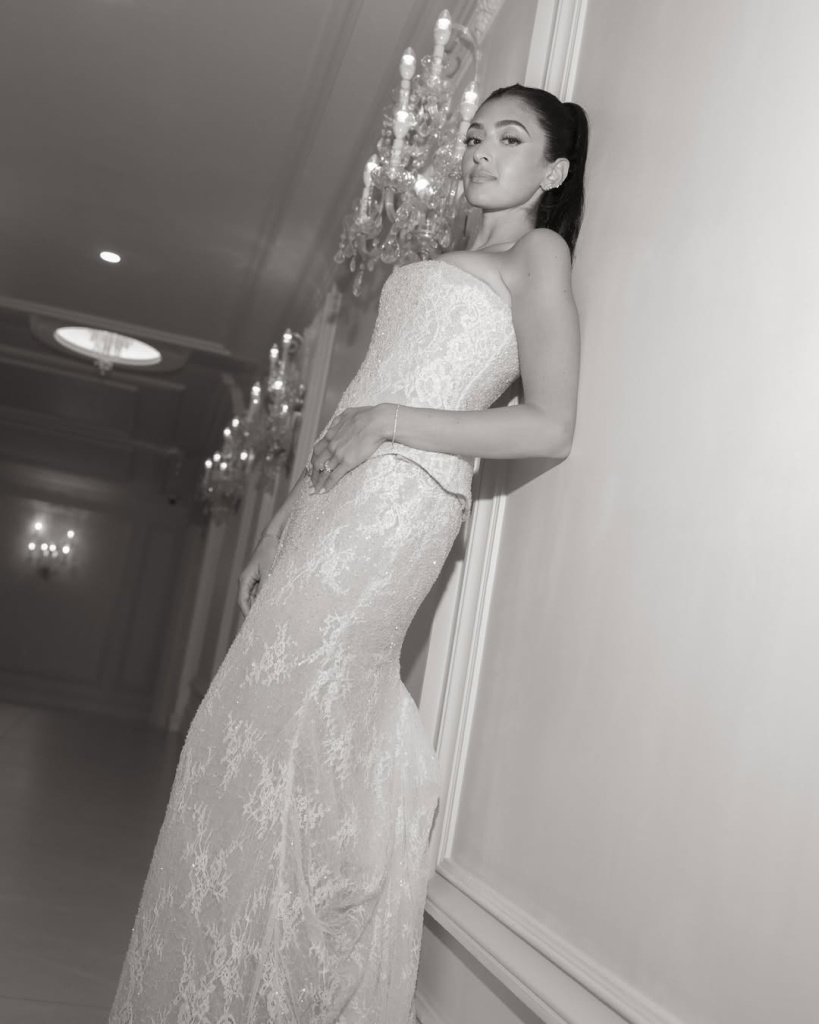
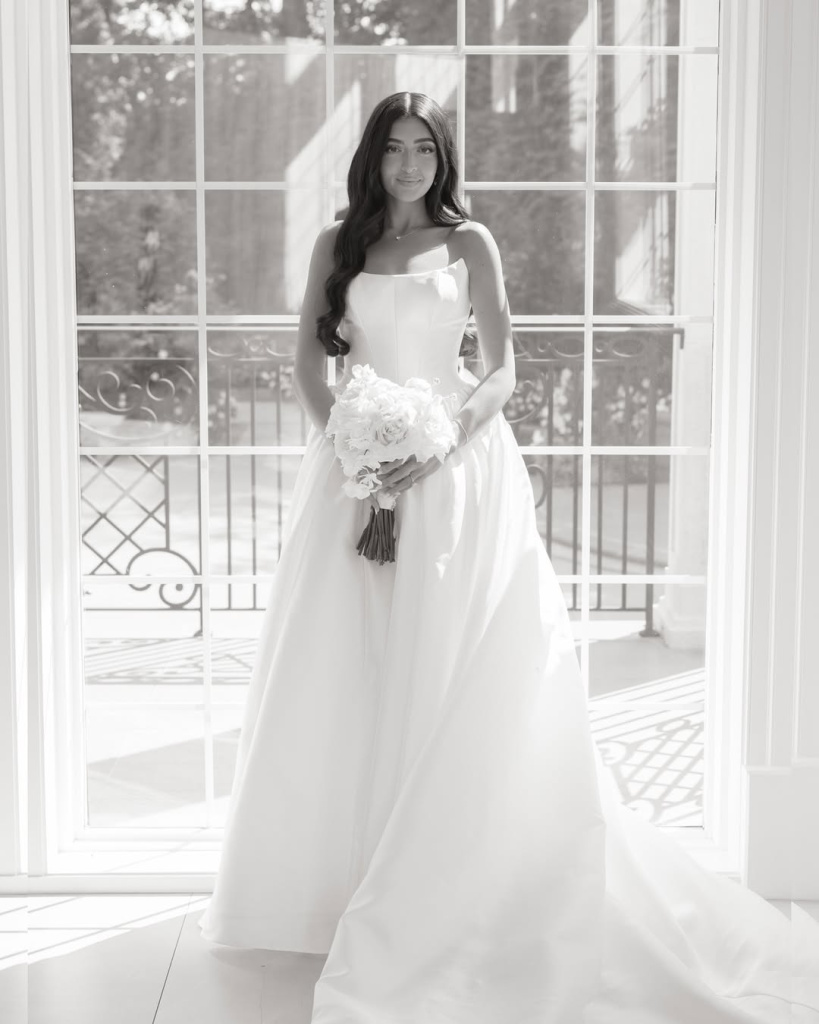
Your venue choice says something important about you as a couple, and it should be properly featured throughout your wedding video. Whether you chose a rustic barn because you love the outdoors, an elegant ballroom because you wanted glamour, or a historic church because of your faith, these details help tell the story of your wedding day.
Good videographers will capture establishing shots of your venue, but you can help by pointing out specific details that drew you to this location. Maybe it's the way light filters through the stained glass windows, the intricate woodwork in your historic venue, or the way your barn venue looks with string lights as the sun sets.
These venue shots also serve a practical purpose in your wedding video – they help establish the setting and create smooth transitions between different parts of your day. When your video moves from getting-ready footage to ceremony coverage, those beautiful venue shots help your viewers understand the flow and location of your celebration.

Film the Meaningful Details
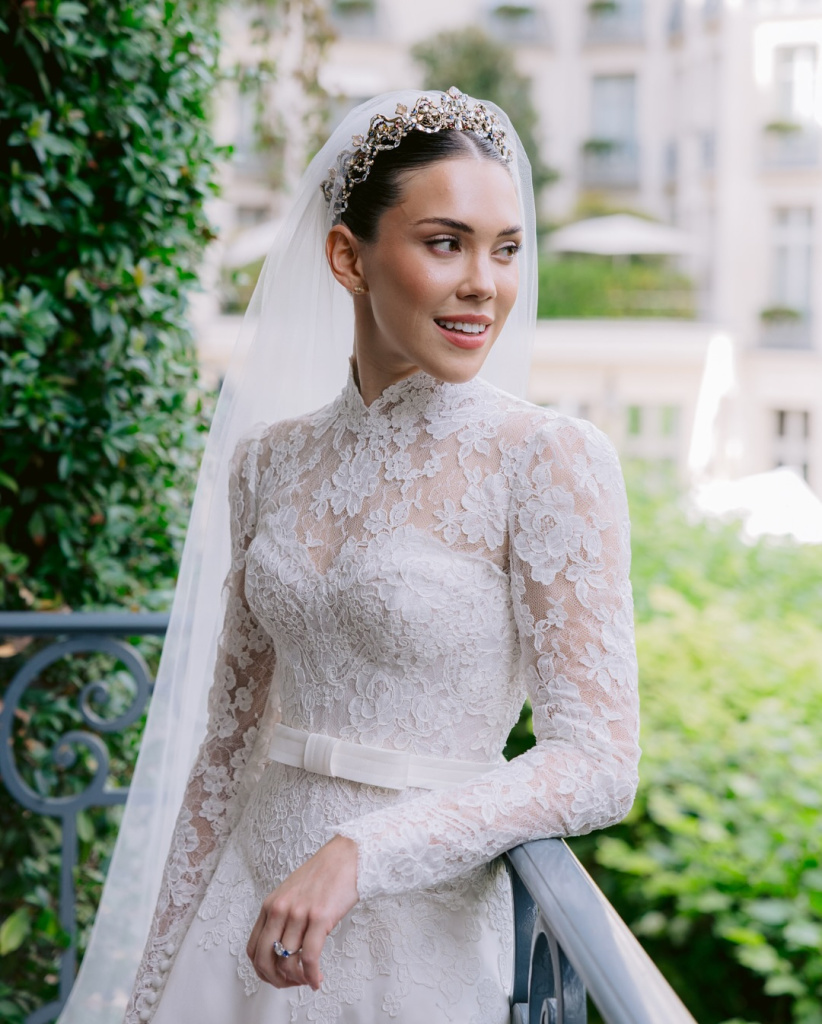
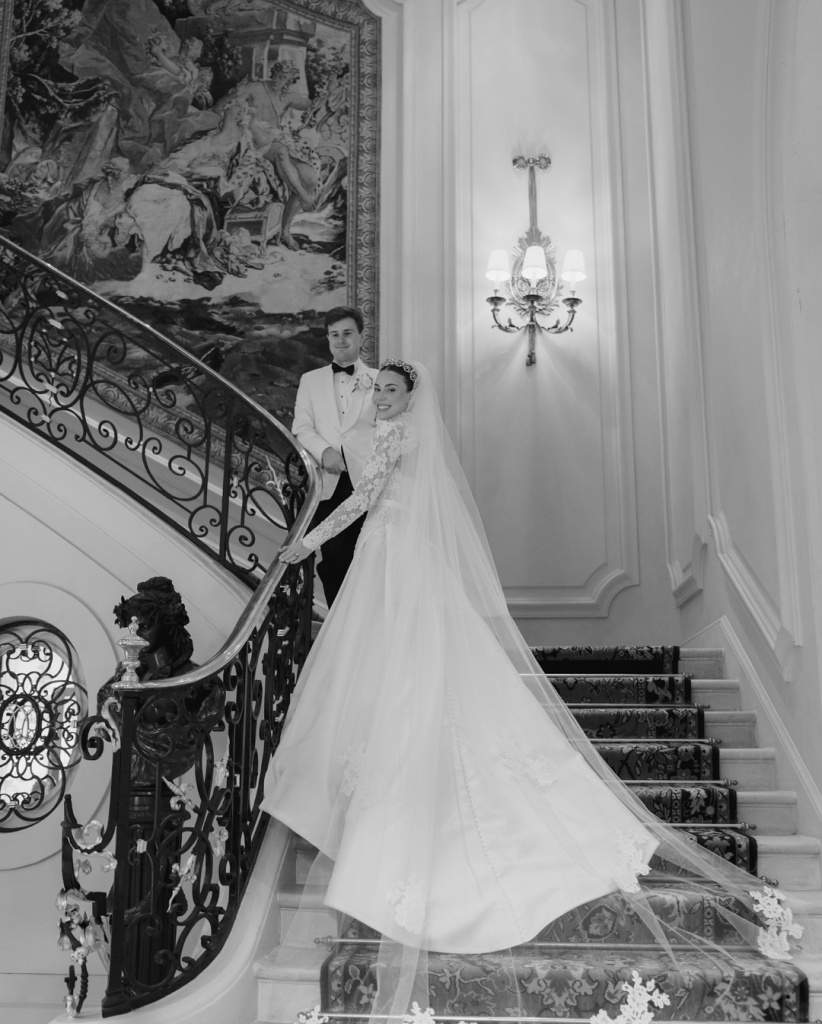
The small touches that took months to plan deserve their moment in the spotlight because they represent the thought and care you put into creating your perfect day. Your videographer should capture these details, but you need to communicate which ones are most important to you.
Consider these meaningful details that should be filmed:
- Your custom wedding invitation and any special design elements
- Family heirloom jewelry you're wearing, like your grandmother's ring or your mother's necklace
- Handwritten letters or notes between you and your partner
- Your wedding rings (especially if they have special engravings or unique designs)
- Special decorations that honor lost loved ones
- Cultural or religious elements that are important to your families
- Flowers that have special meaning
- Details of your wedding dress that are important to you
When you watch your wedding video years from now, you'll love seeing these special elements that made your day uniquely yours. They help tell the complete story of your celebration and remind you of all the thought and love that went into planning your perfect day.







